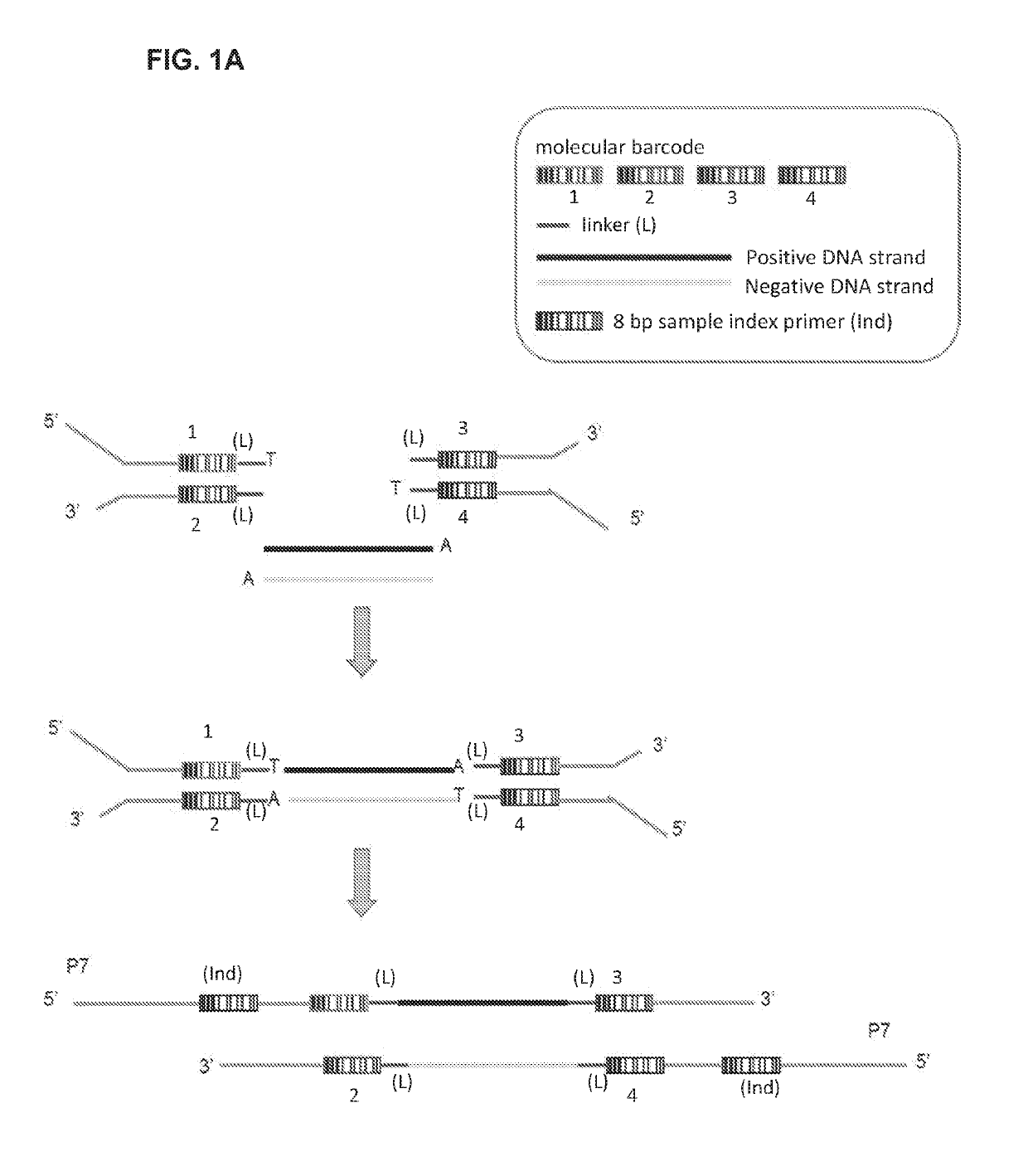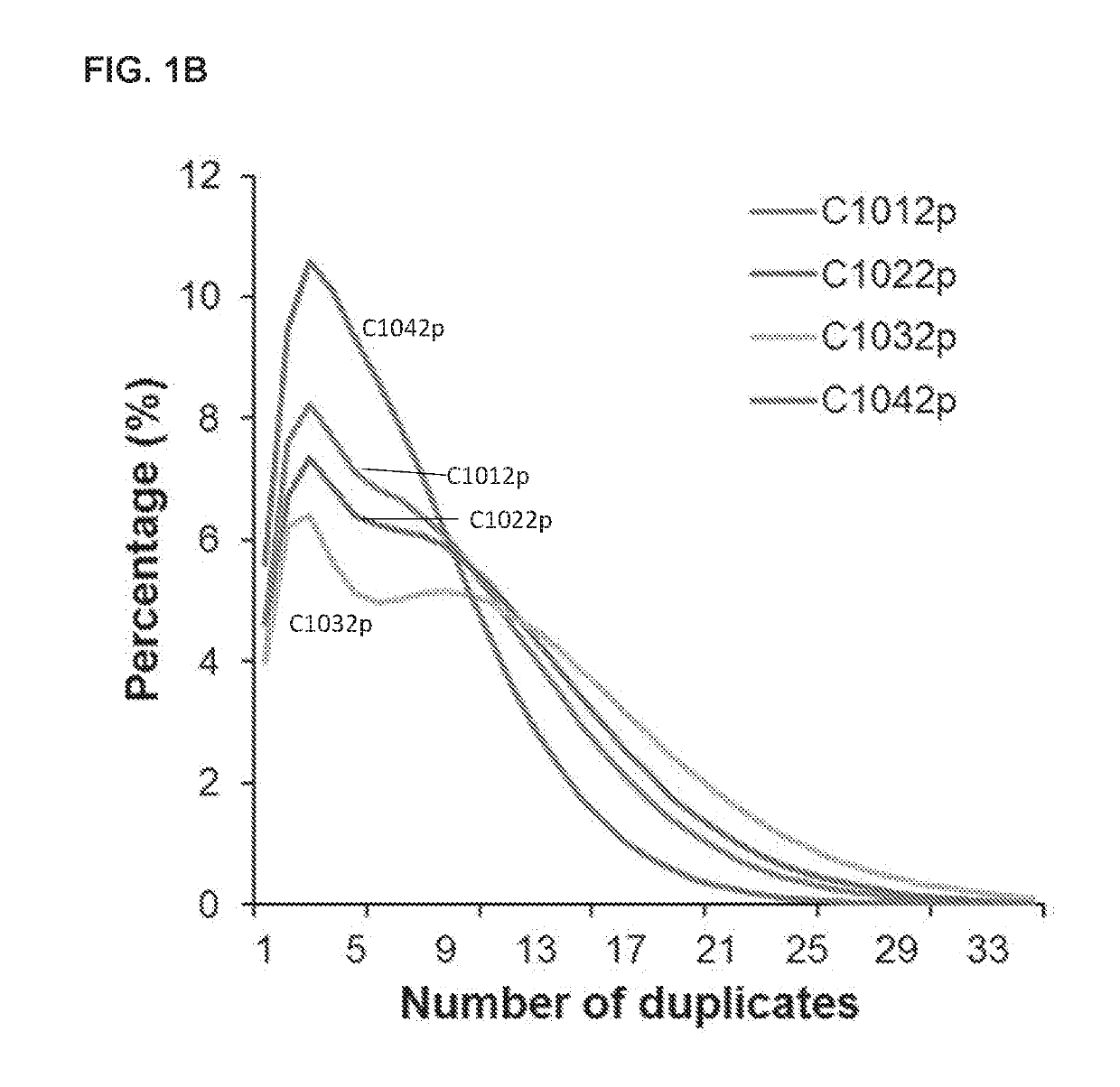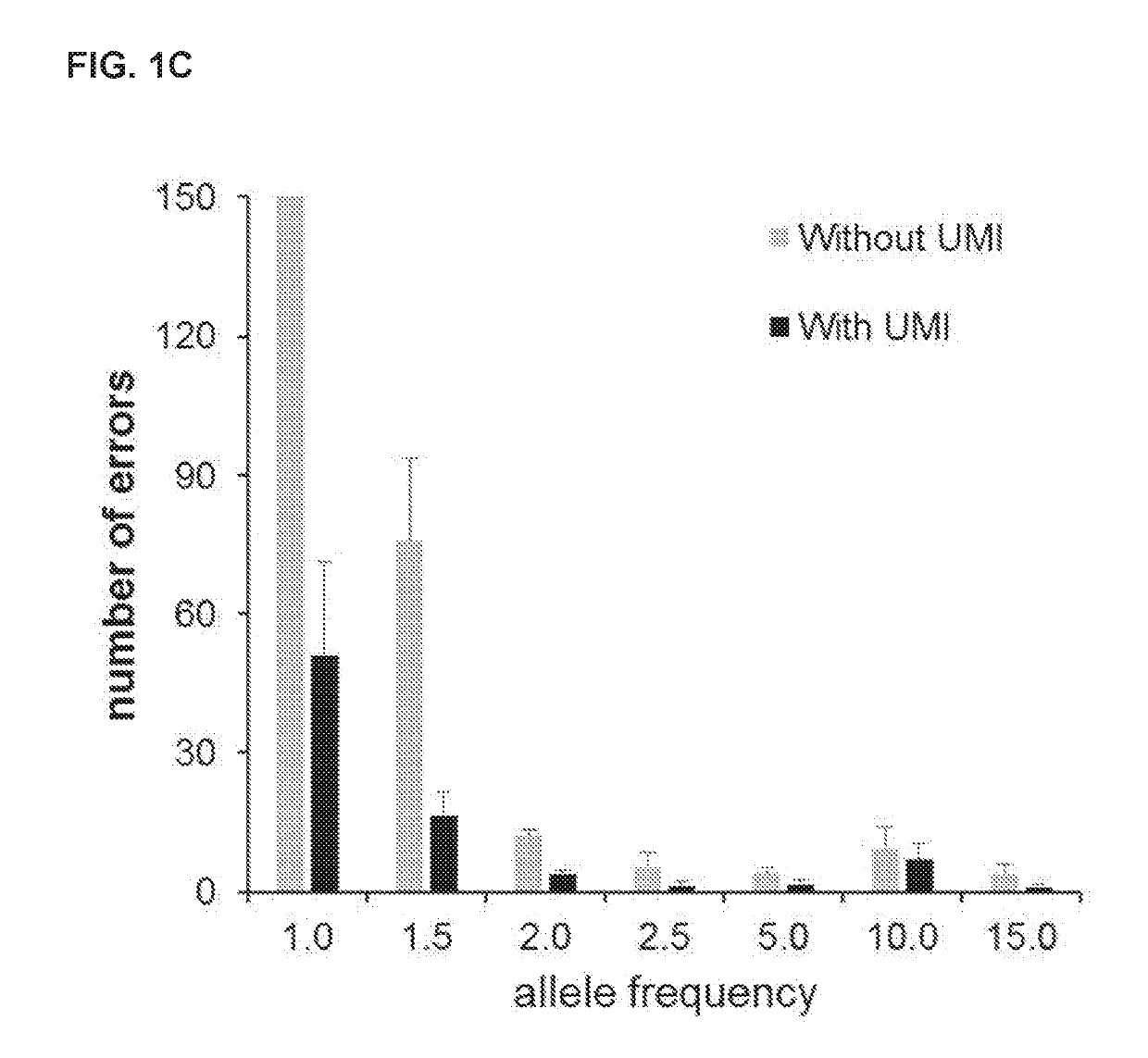Clinical application of cell free DNA technologies to non-invasive prenatal diagnosis and other liquid biopsies
a cell-free dna and prenatal diagnosis technology, applied in the field of cell-free dna technology, can solve the problems of difficult to be used as a high-throughput screening test for a broad spectrum of mendelian diseases, and still cost prohibitive to be used as a screening test for a large population
- Summary
- Abstract
- Description
- Claims
- Application Information
AI Technical Summary
Problems solved by technology
Method used
Image
Examples
example 1
Testing of Fetal DNA for Variants
[0060]The incidence of single gene disorders in live-born individuals is ˜0.36%, while the aggregated incidence of chromosomal anomalies is 0.18%. Yet, current non-invasive prenatal testing (NIPT) is targeted towards detection of chromosomal abnormalities in the fetus, while a prenatal screening test for pathogenic variants in multiple single genes is not available.
[0061]Methods
[0062]Plasma sample of 170 pregnant women and 47 spike-in samples with known pathogenic variants were used in this example of a study. After tagging cfDNA with unique molecular index by adaptor ligation and hybridization-based target enrichment followed by next-generation sequencing, the target region was analyzed with average read-depth of >1,000×. A set of regions containing 153 highly polymorphic SNPs were used to determine fetal fraction. All positive results were confirmed by a secondary assay and / or Sanger sequencing on DNA from invasive or postnatal specimens.
[0063]Find...
example 2
Non-Invasive Prenatal Testing of Single Gene Disorders for Pregnancies with Abnormal Ultrasound Findings or Advanced Paternal Age
[0067]The Application of Unique Molecular Indexing to Suppress Sequencing Artifacts
[0068]During the PCR of NGS library construction and sequencing processes, random DNA changes can be introduced that result in an increase in sequence background noise (11-14). The test specificity is exacerbated for the detection of de novo or paternal alleles in maternal cfDNA that are usually present in low percentages in maternal plasma cfDNA. To aid in separating the bona fide variants from artifacts, unique molecular indexing (UMI) is used in the library construction process. The UMI used in this assay comprises degenerated nucleotides and a linker of fixed sequences (FIG. 1A). Because the UMIs are at least 105 times of the numbers of DNA molecules in 10 ng gDNA input, these DNA fragments can be individually labeled with different UMIs even though some fetal cfDNA frag...
PUM
| Property | Measurement | Unit |
|---|---|---|
| disorder | aaaaa | aaaaa |
| monogenic Mendelian disorder | aaaaa | aaaaa |
| structures | aaaaa | aaaaa |
Abstract
Description
Claims
Application Information
 Login to View More
Login to View More - R&D
- Intellectual Property
- Life Sciences
- Materials
- Tech Scout
- Unparalleled Data Quality
- Higher Quality Content
- 60% Fewer Hallucinations
Browse by: Latest US Patents, China's latest patents, Technical Efficacy Thesaurus, Application Domain, Technology Topic, Popular Technical Reports.
© 2025 PatSnap. All rights reserved.Legal|Privacy policy|Modern Slavery Act Transparency Statement|Sitemap|About US| Contact US: help@patsnap.com



